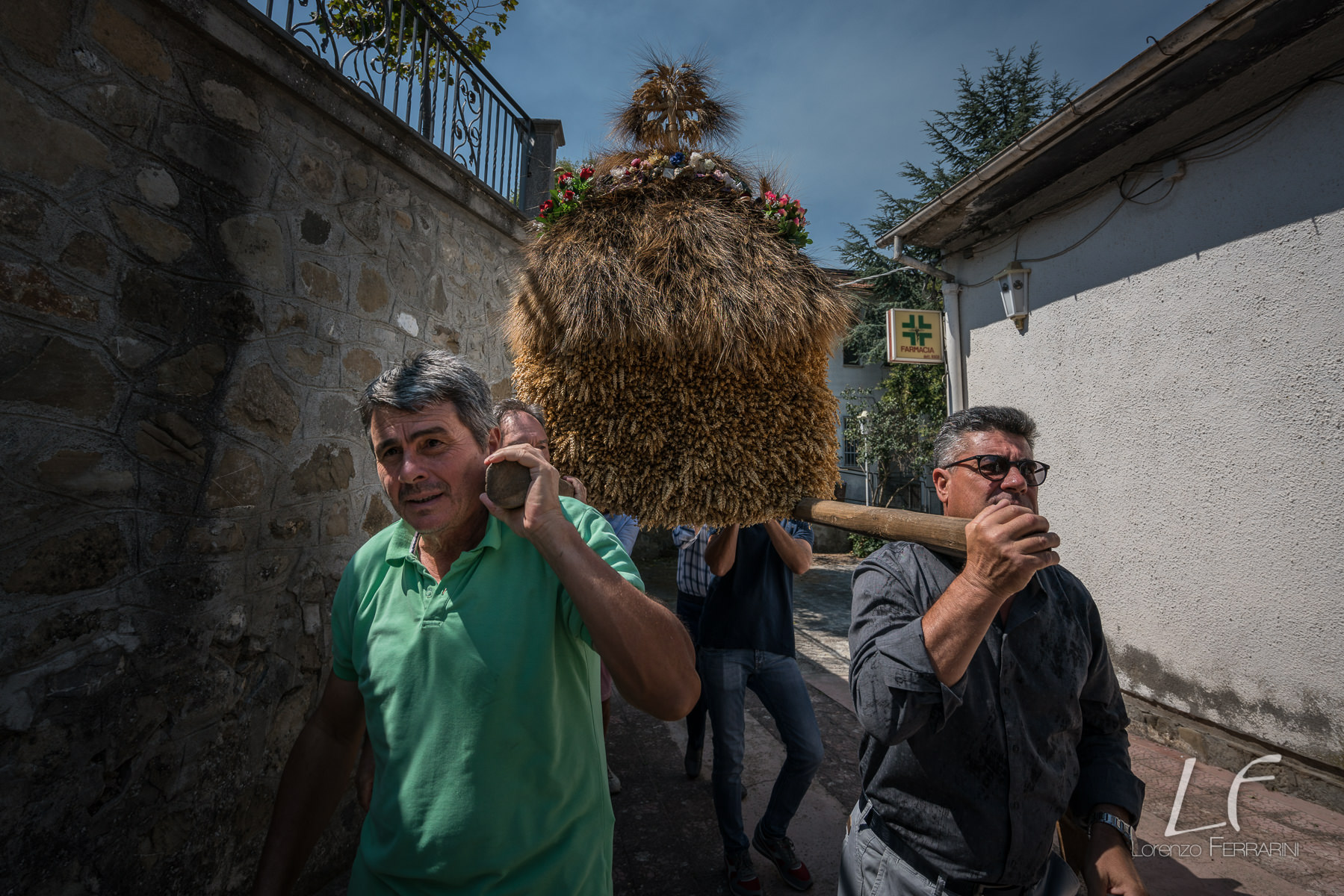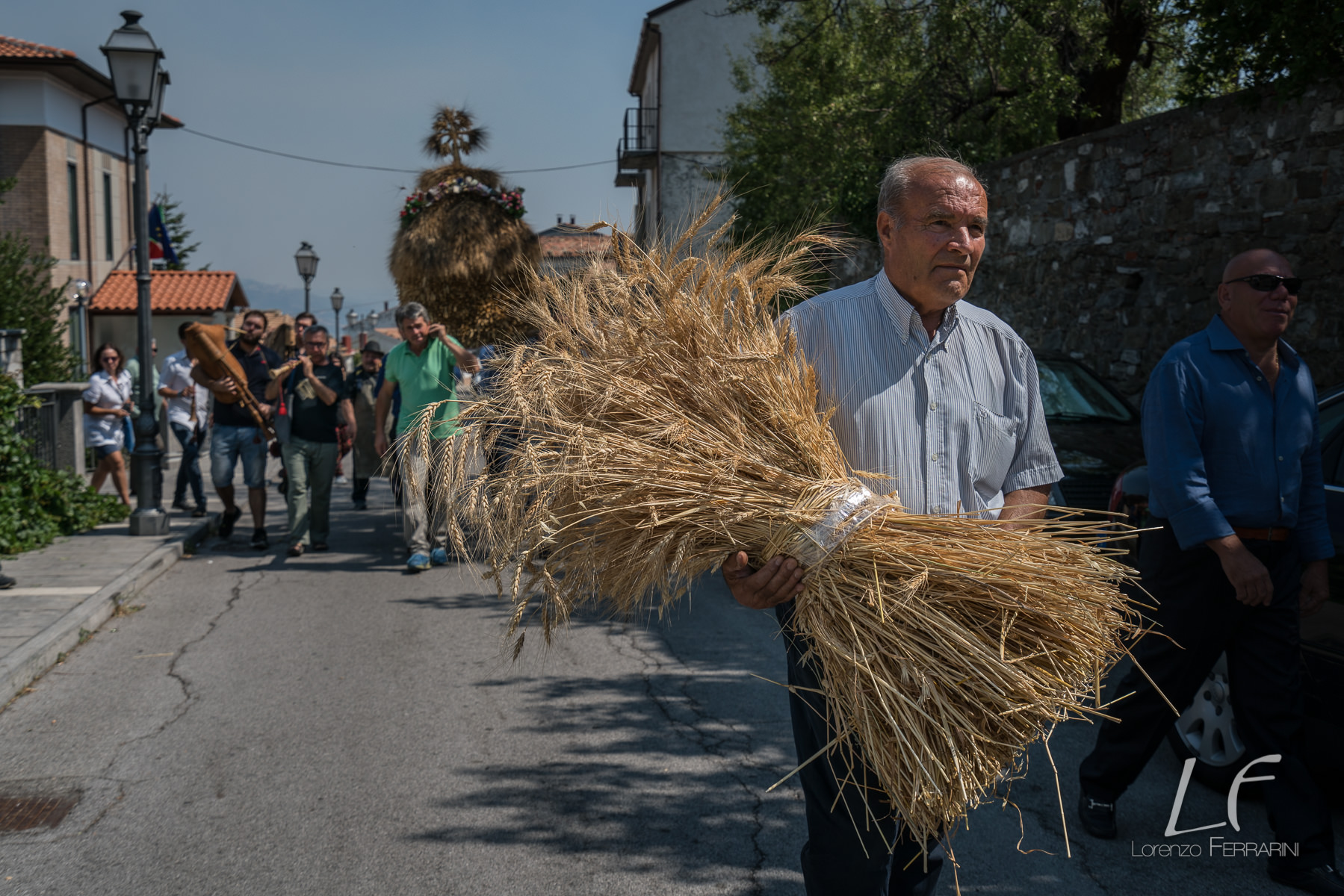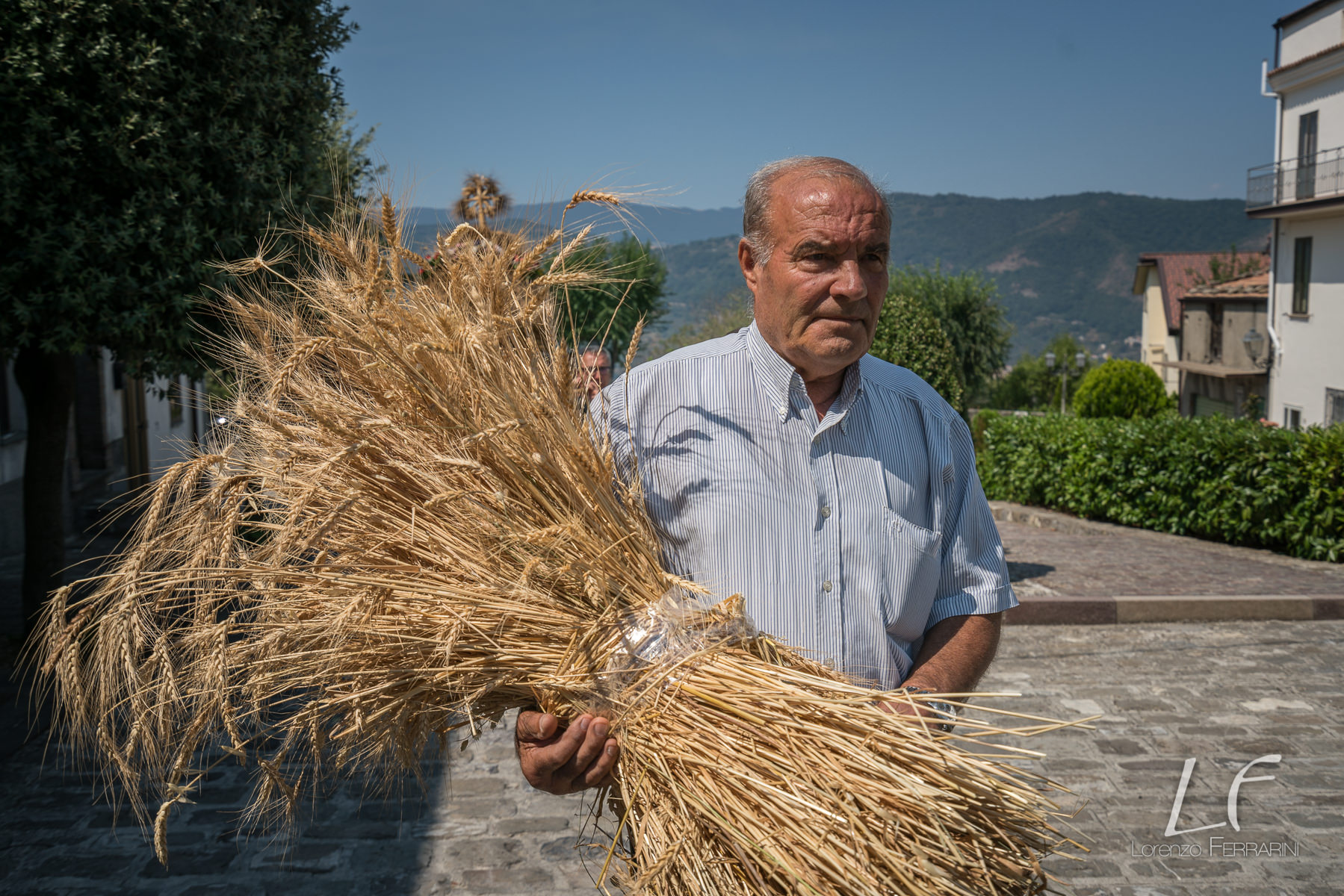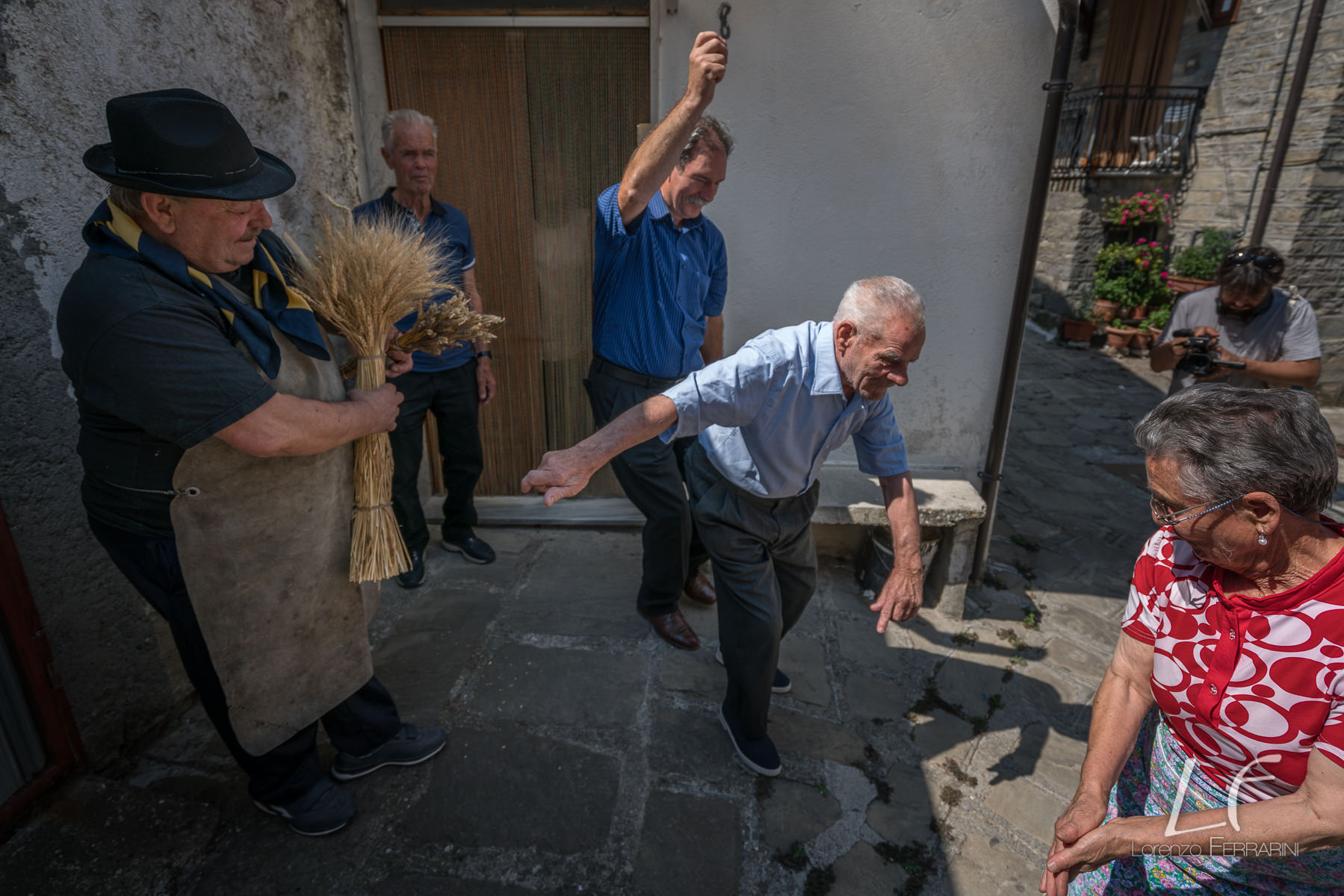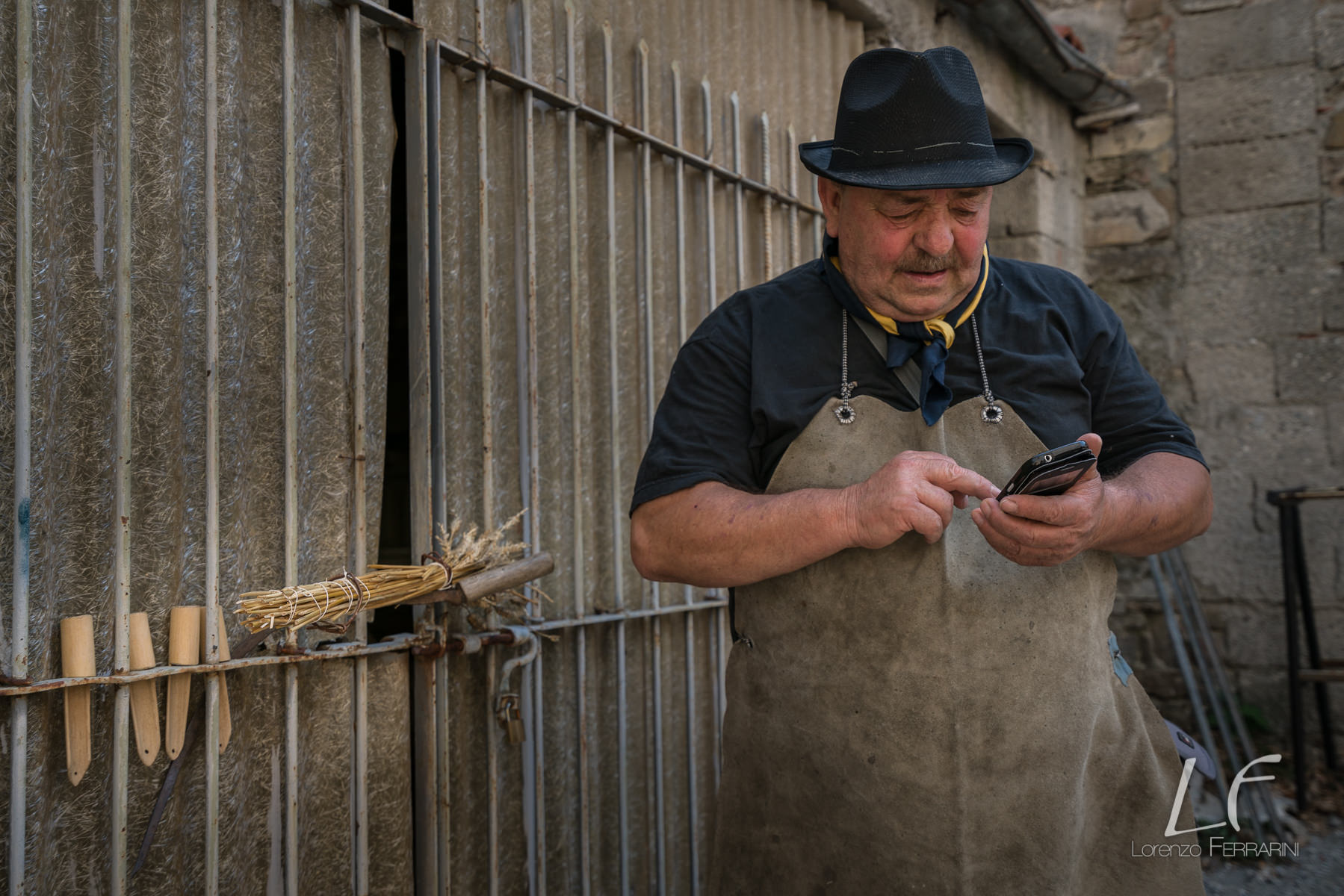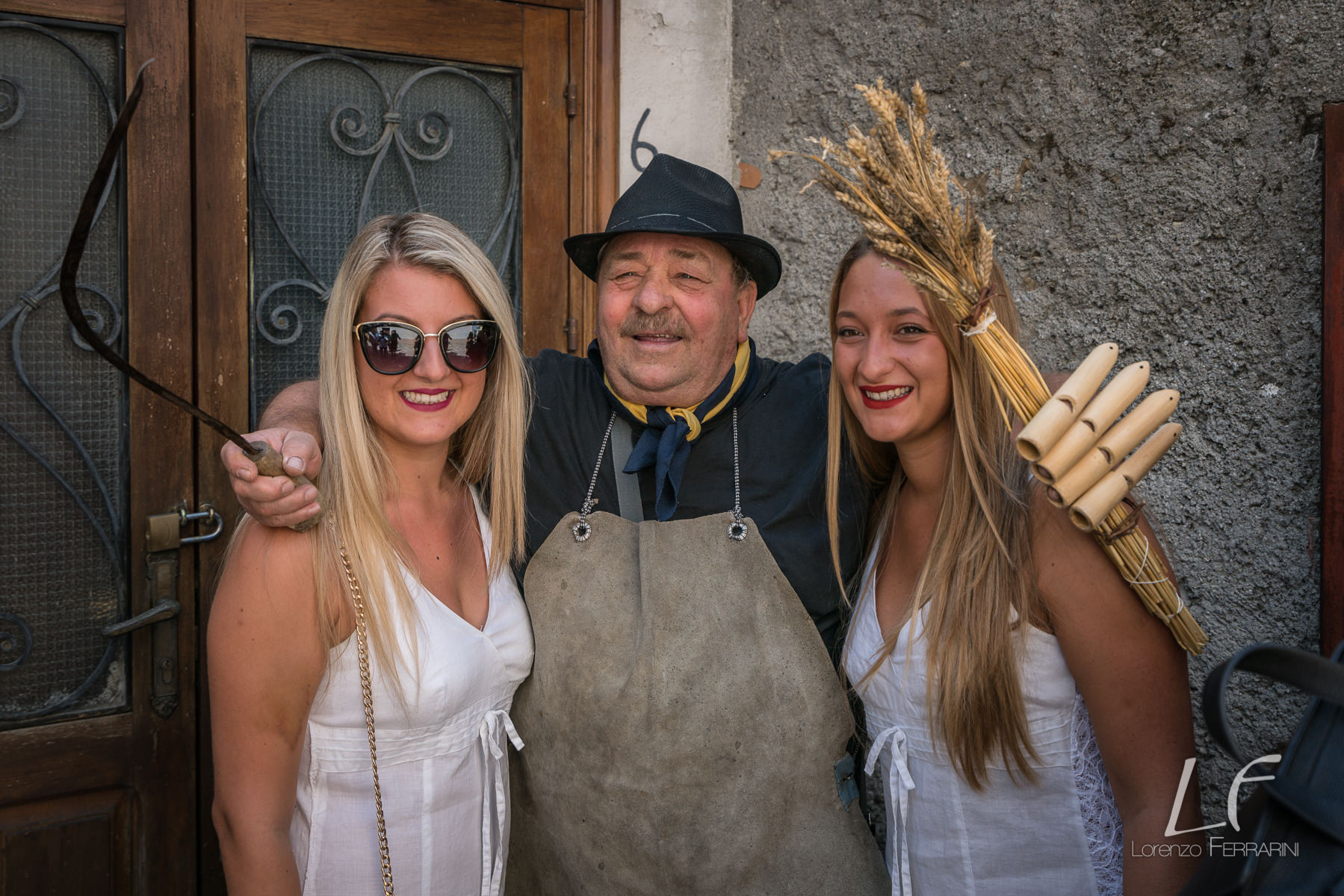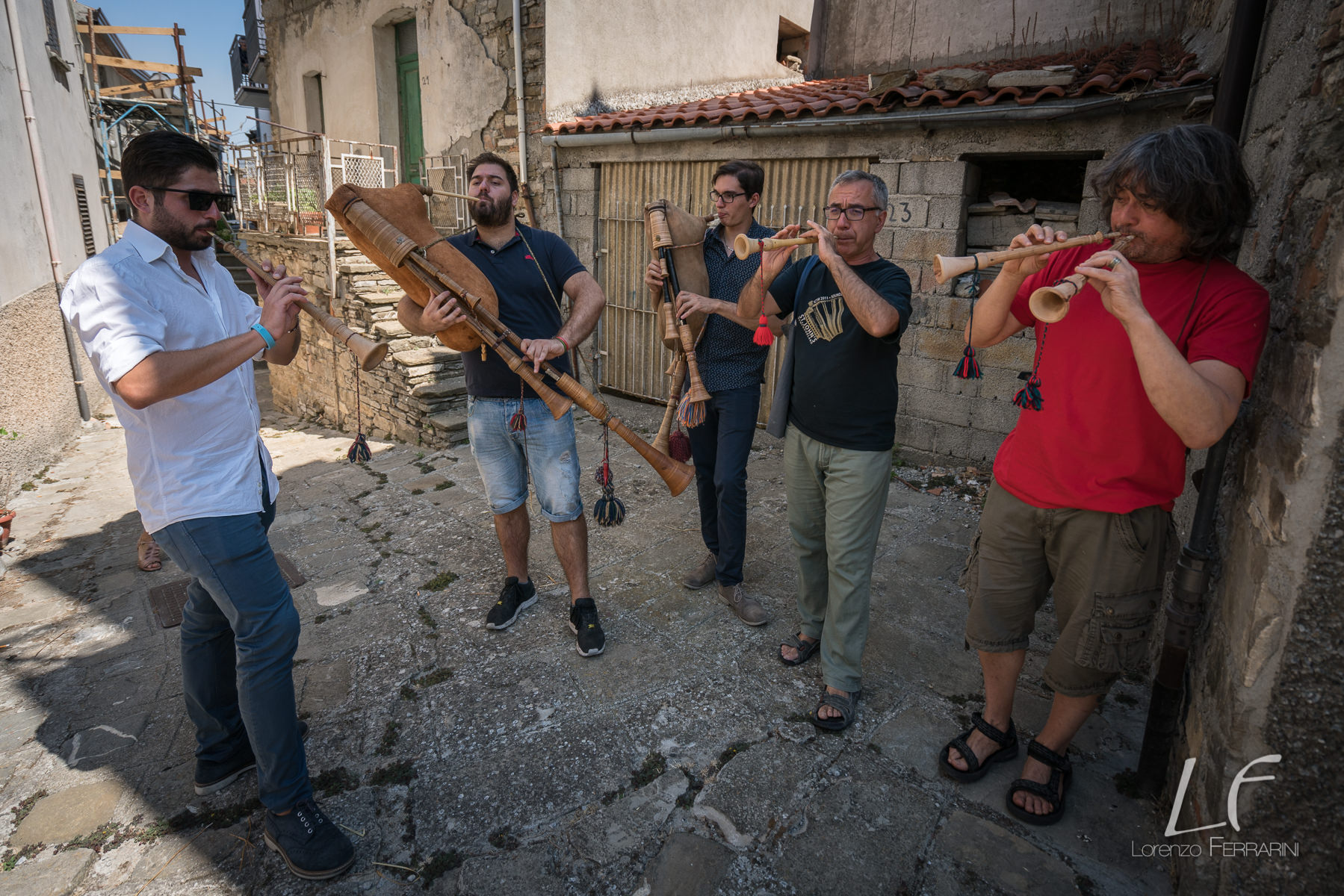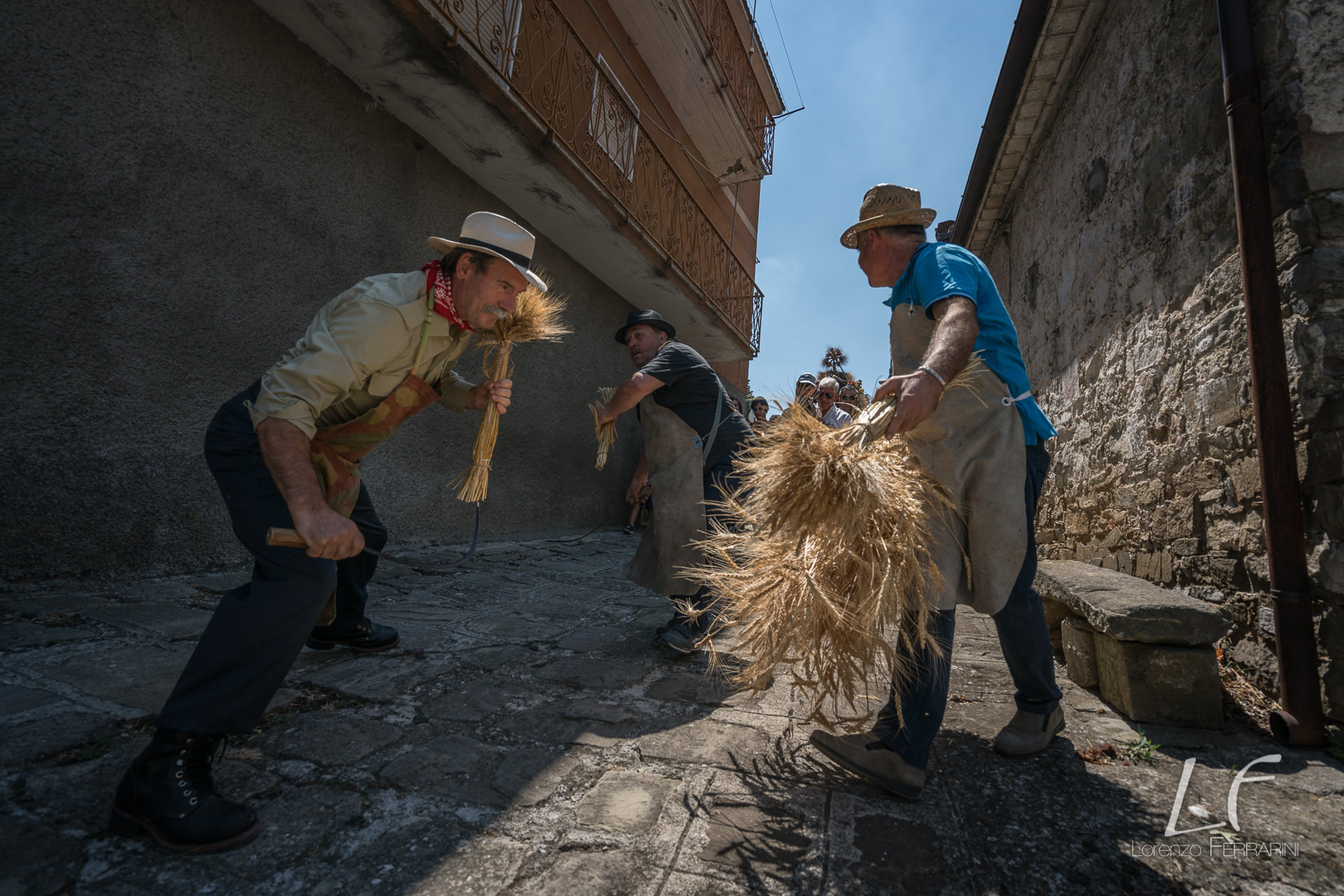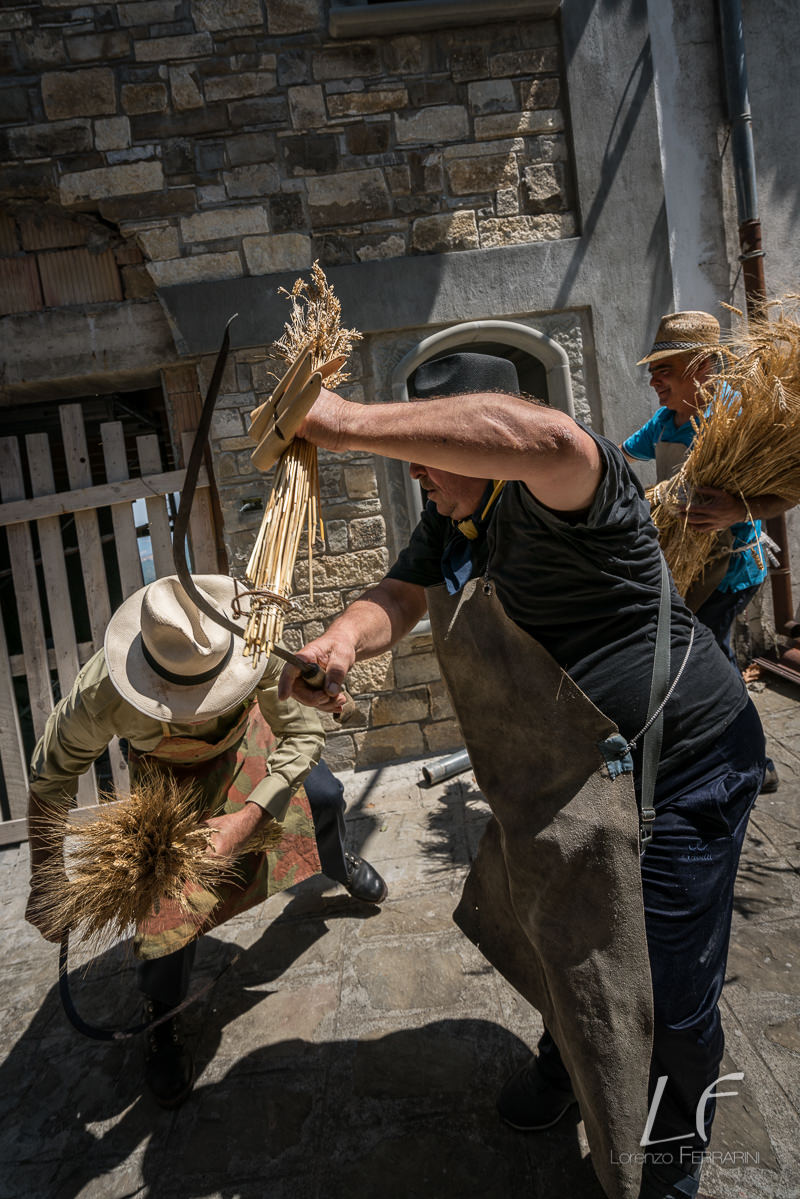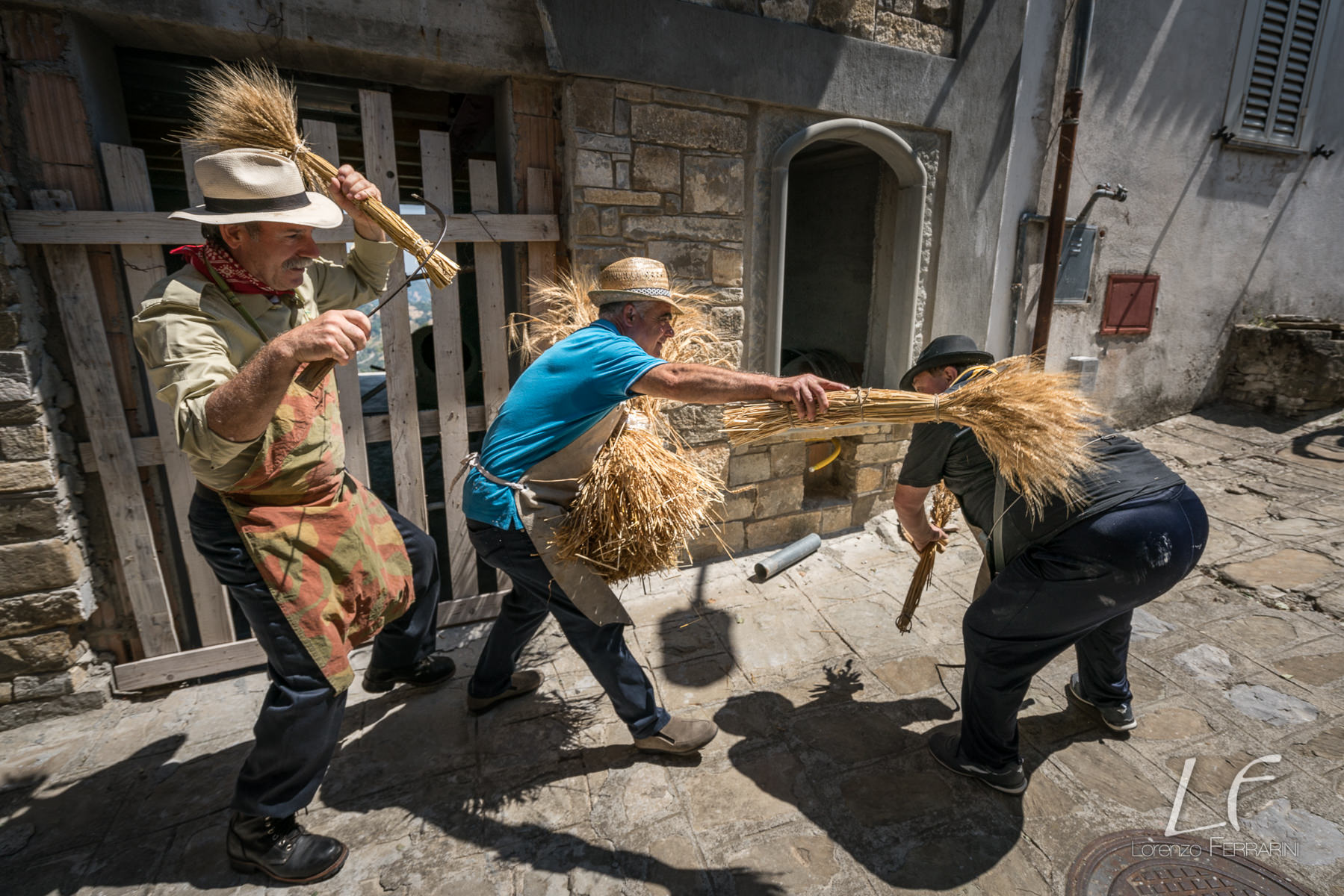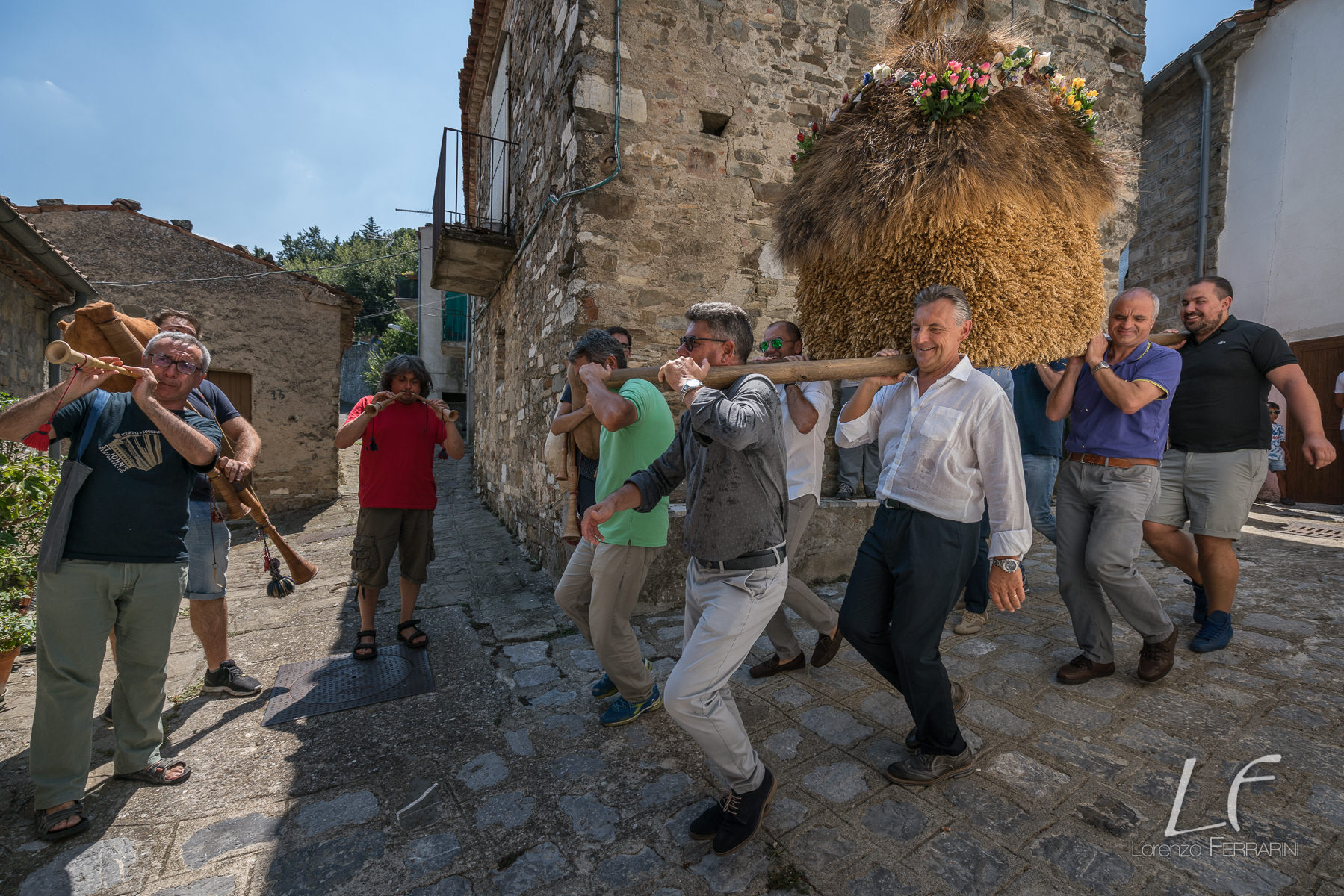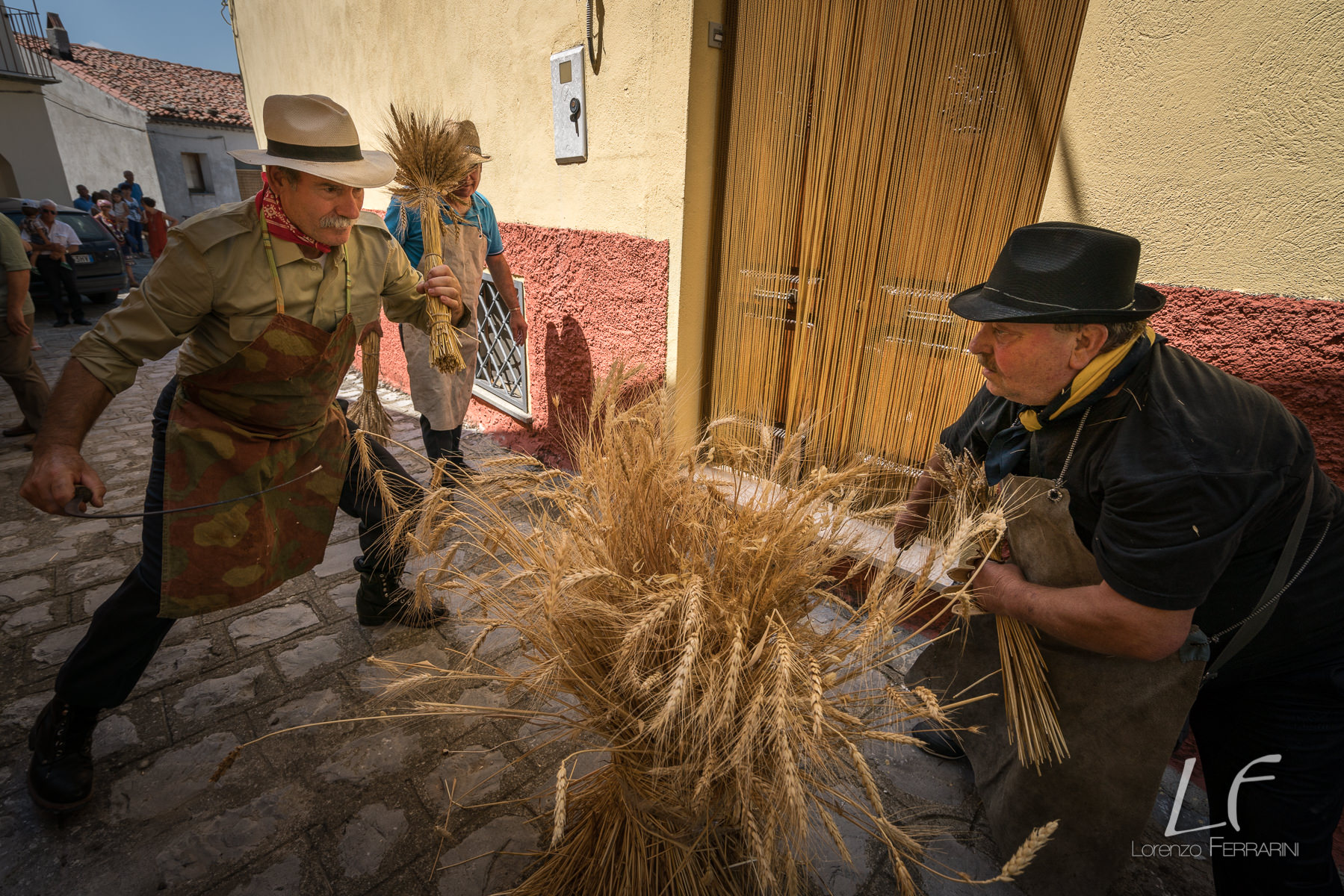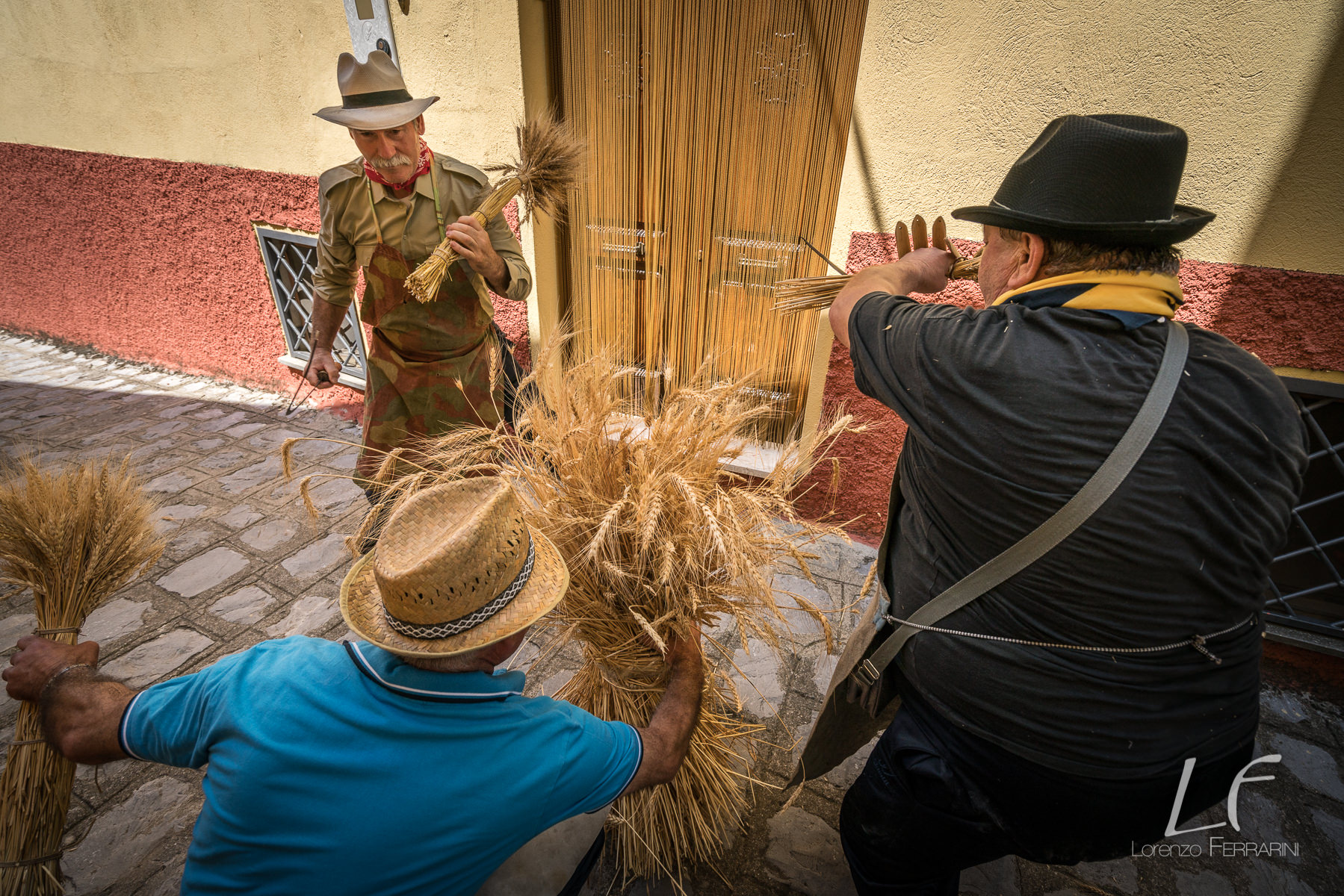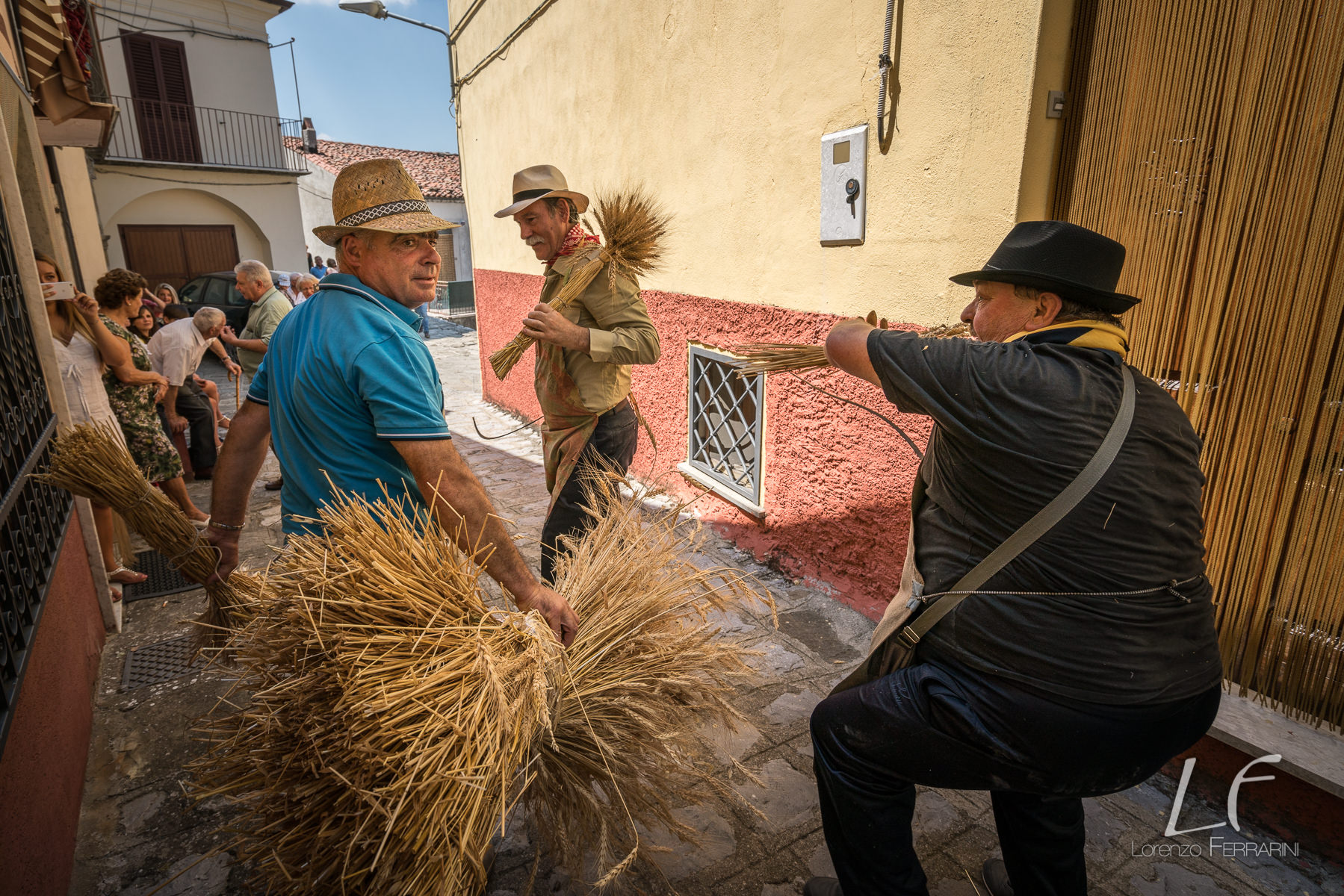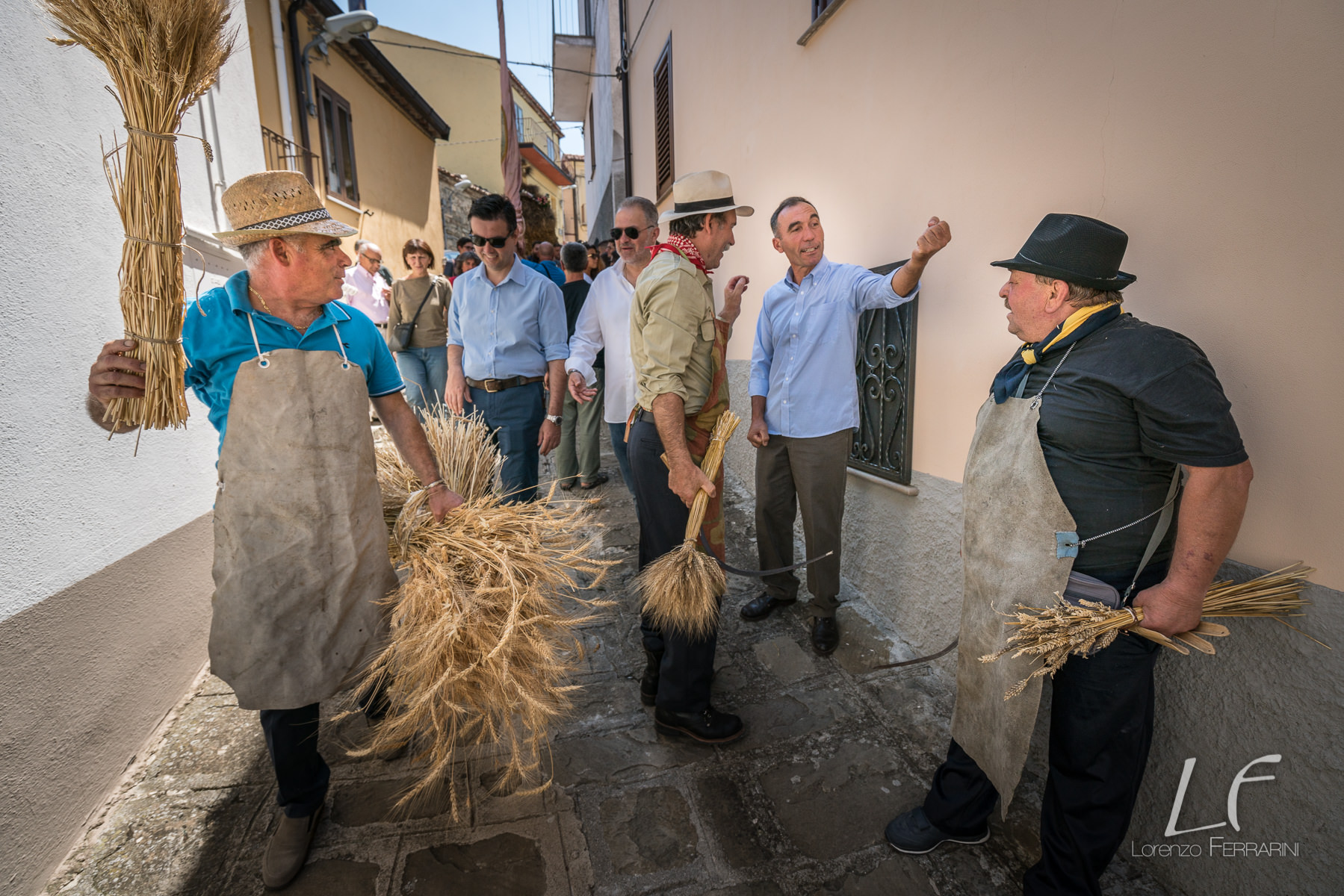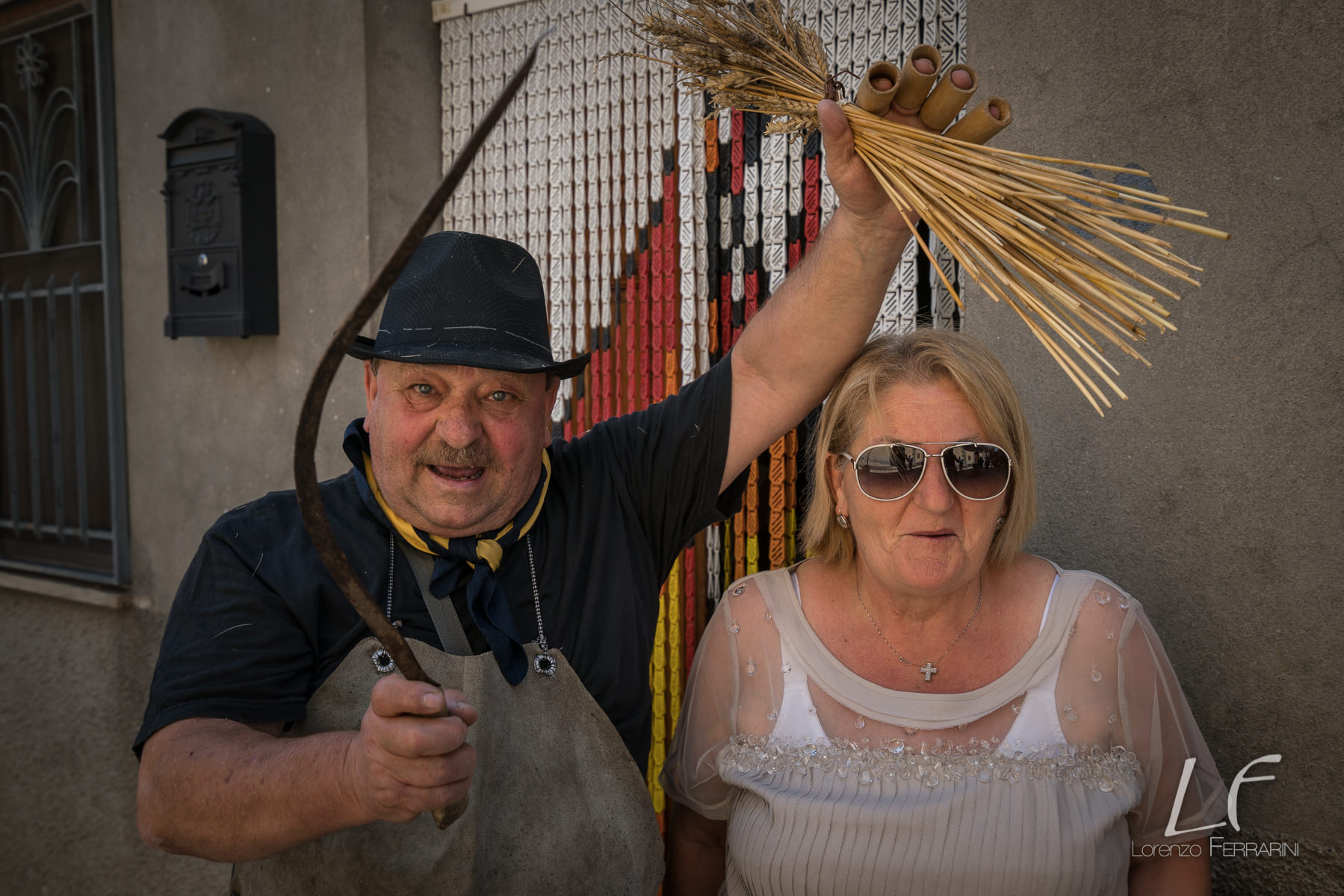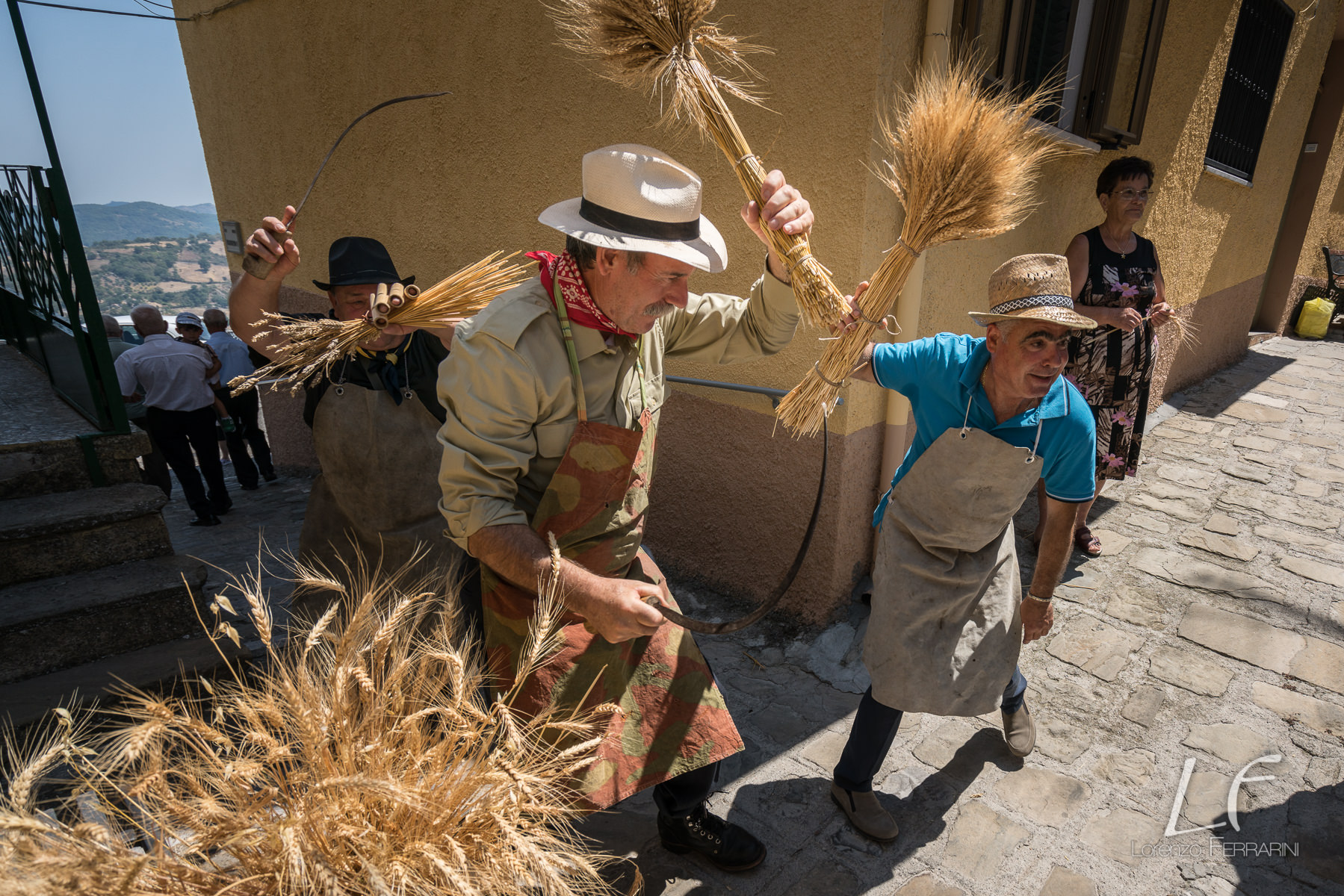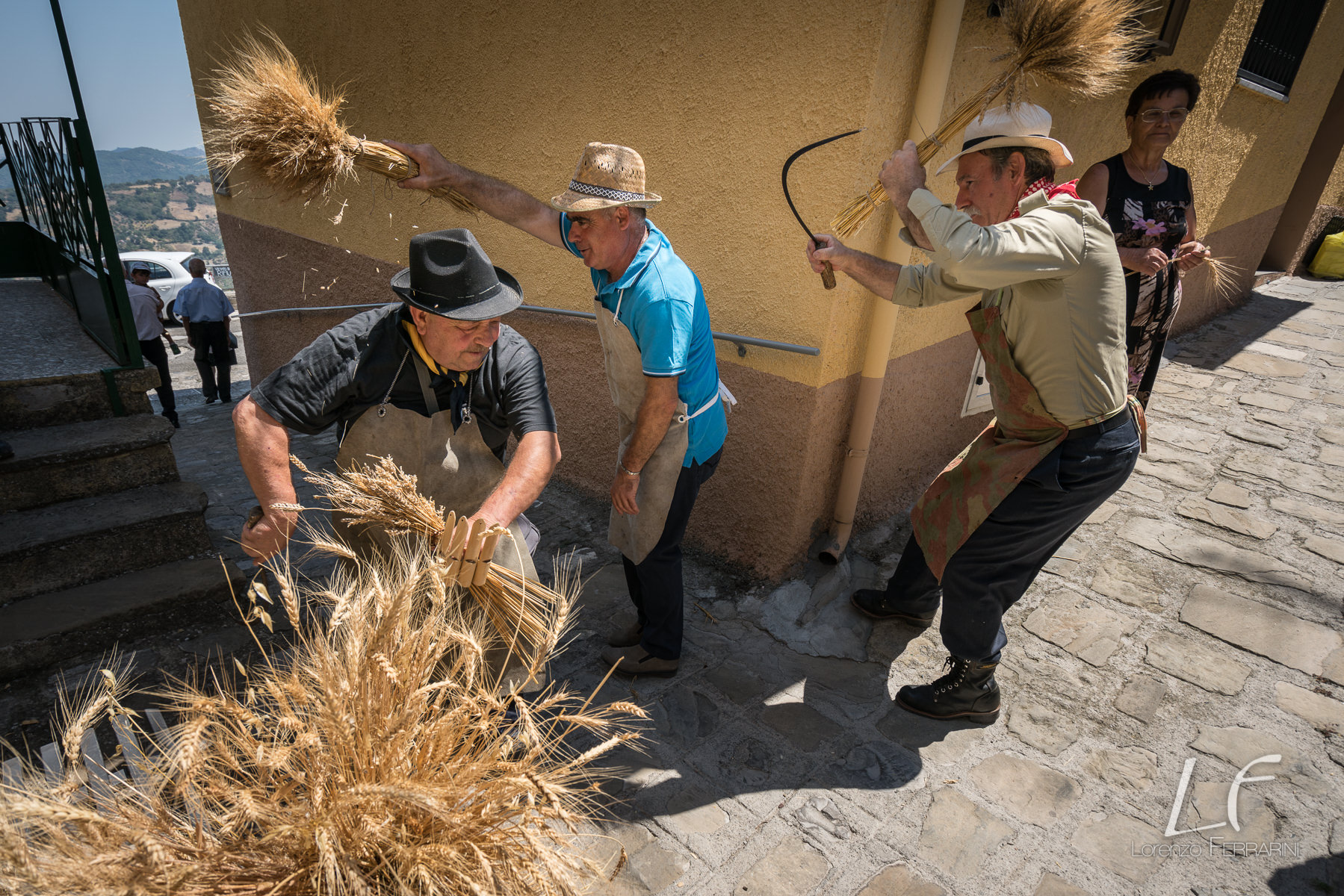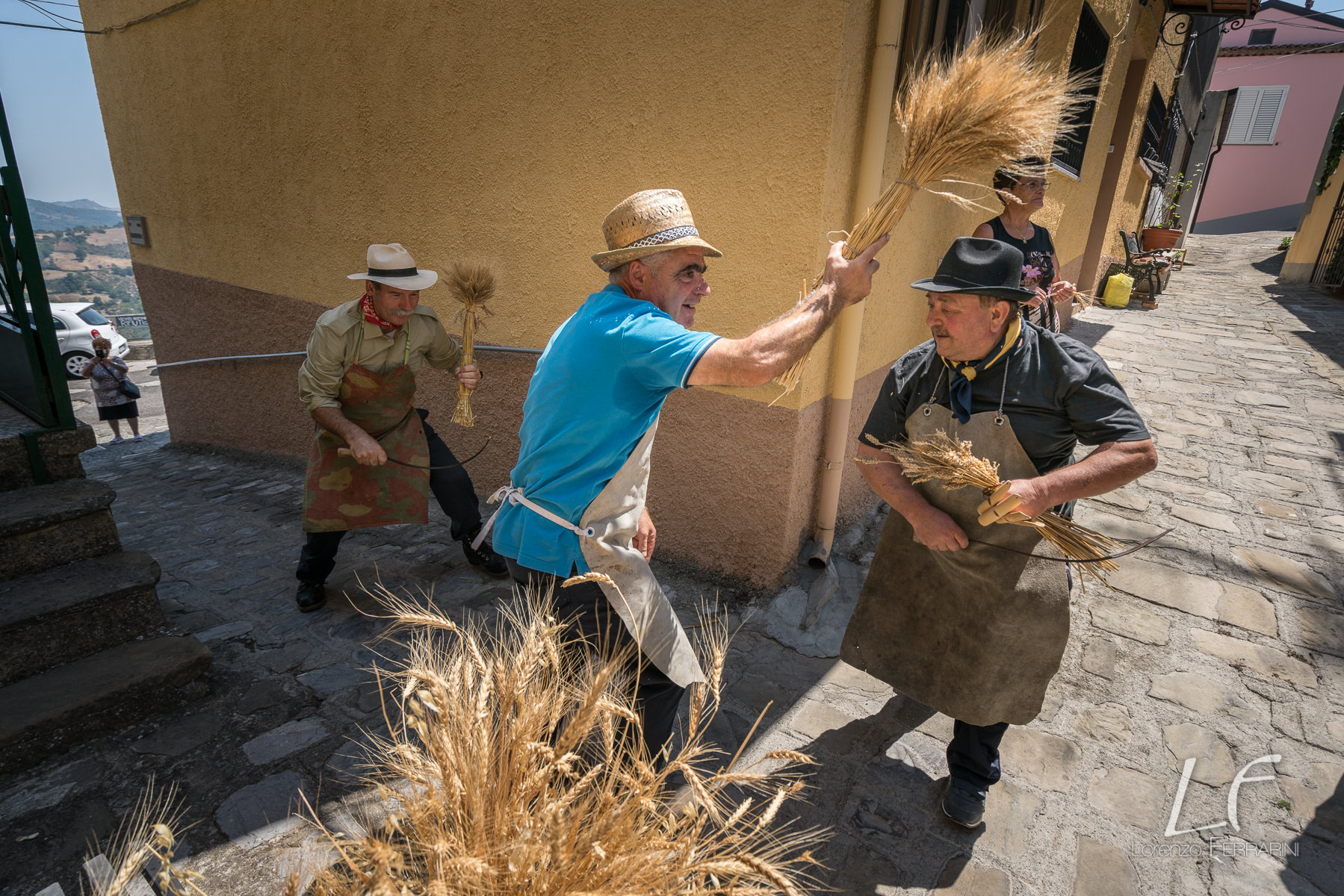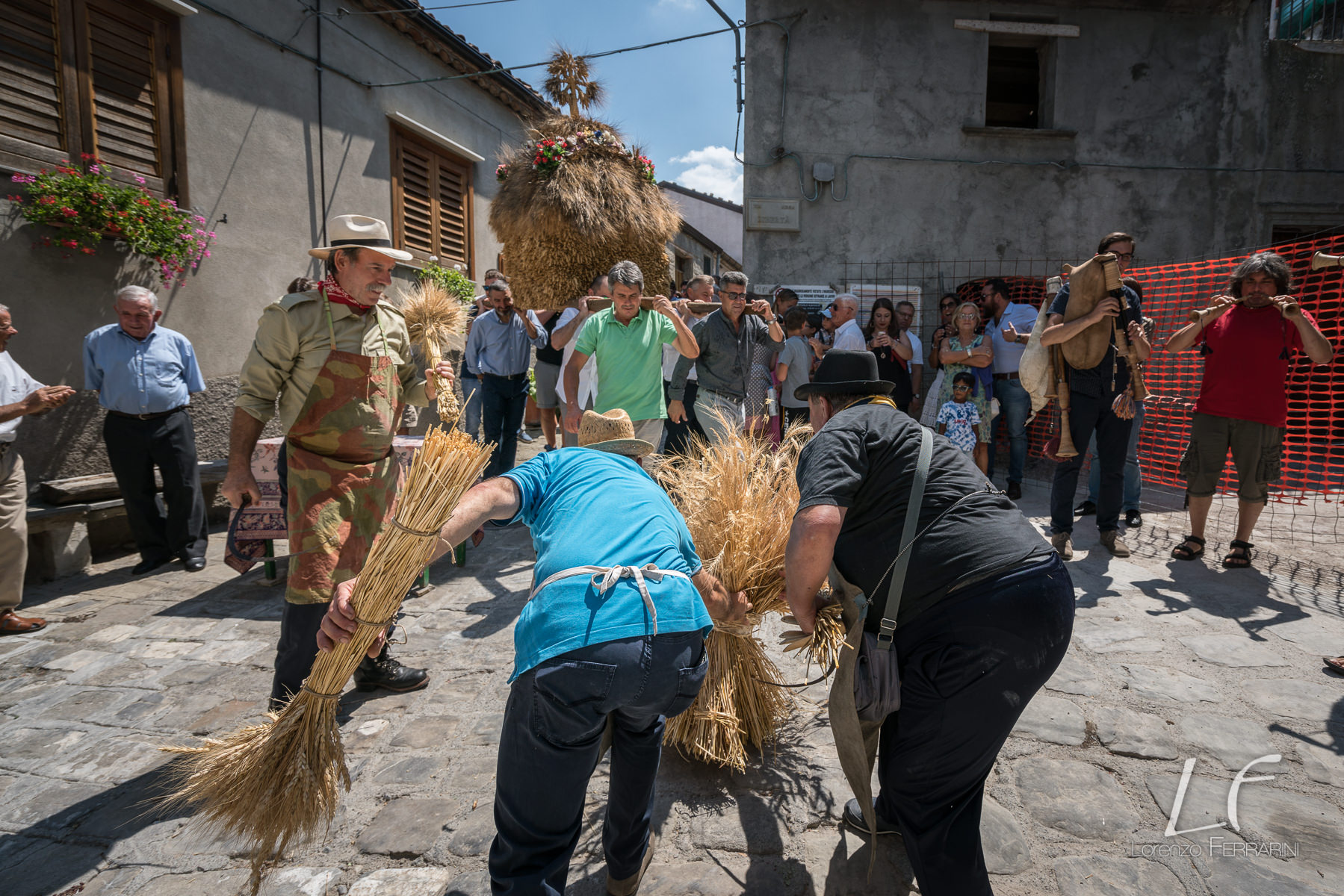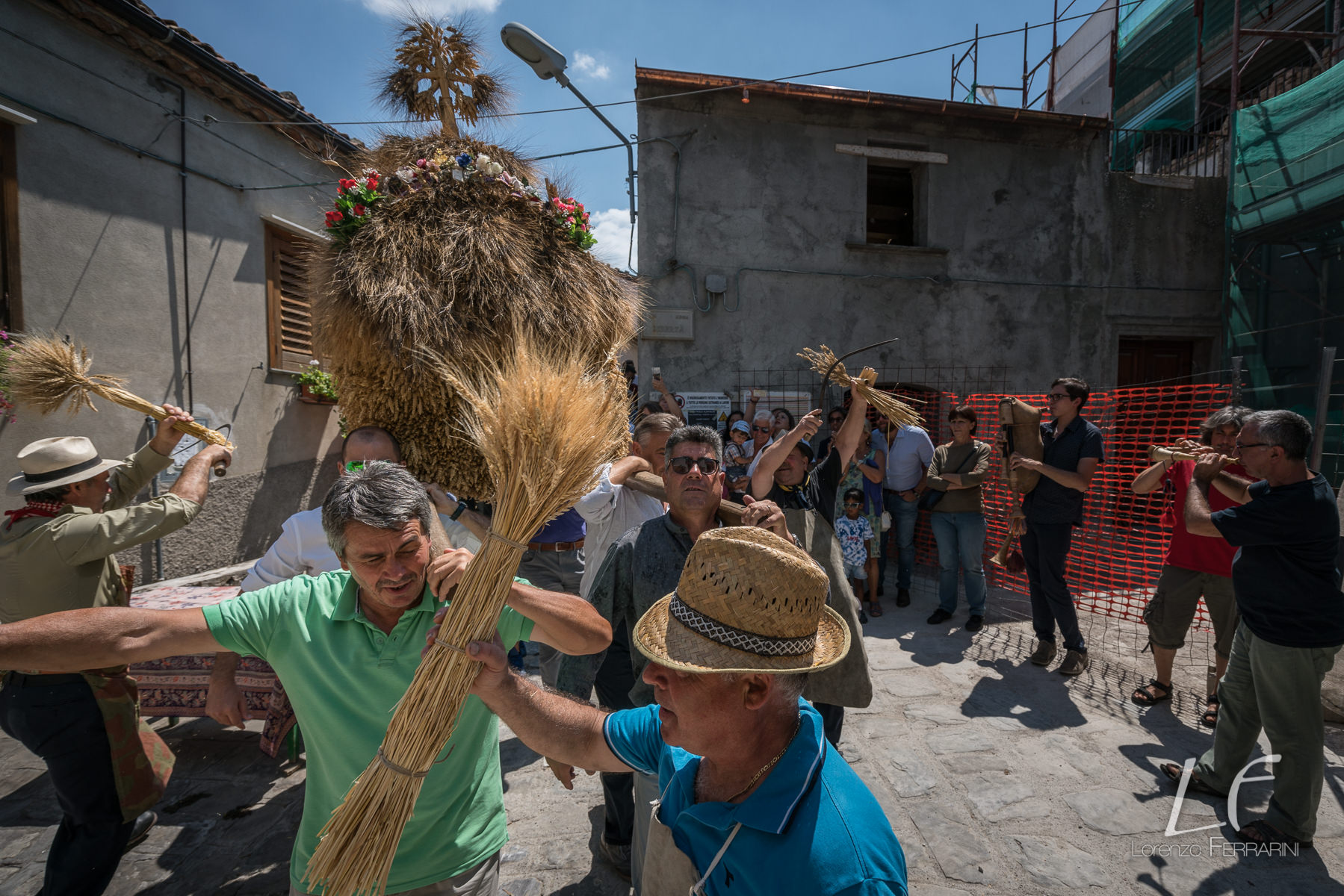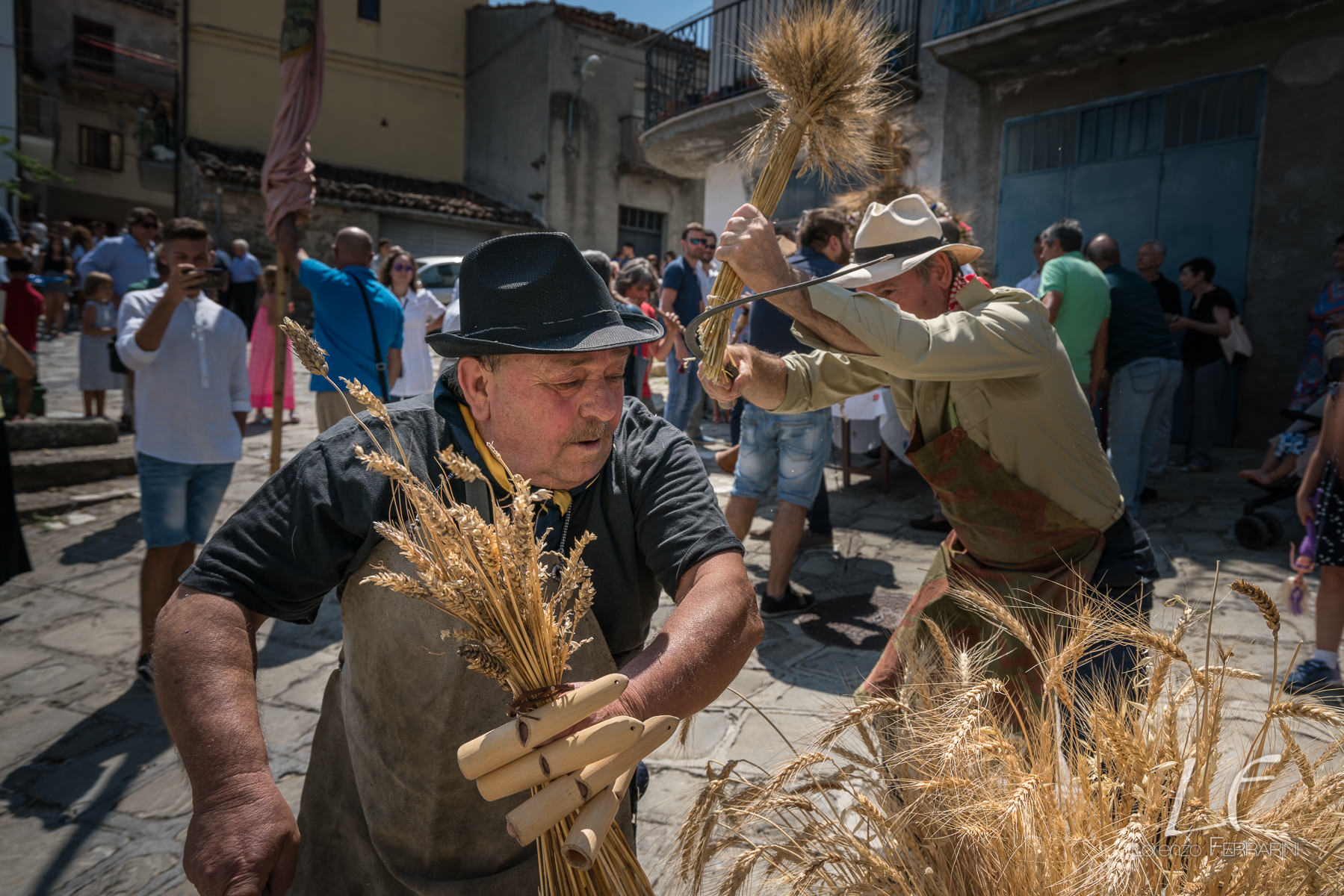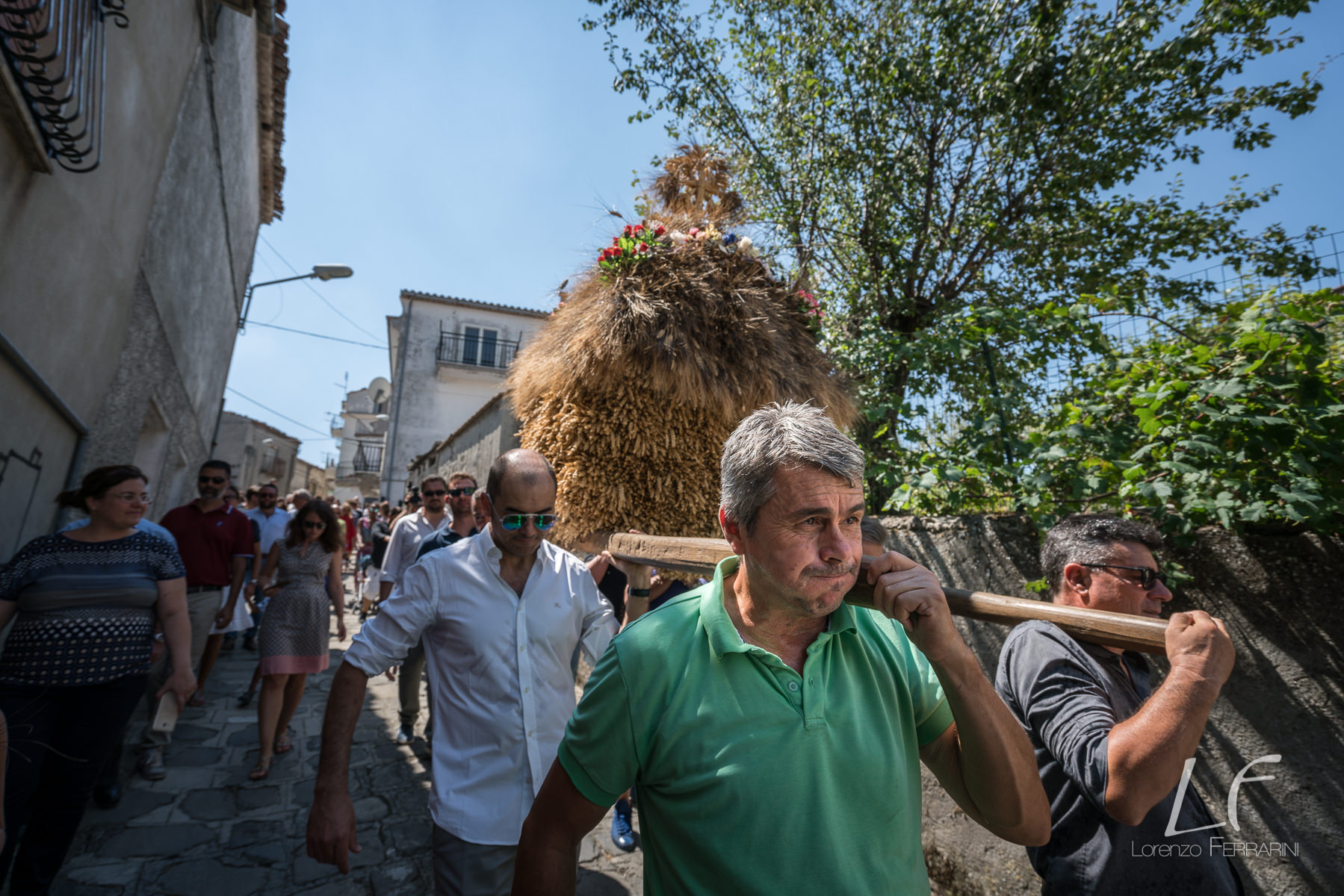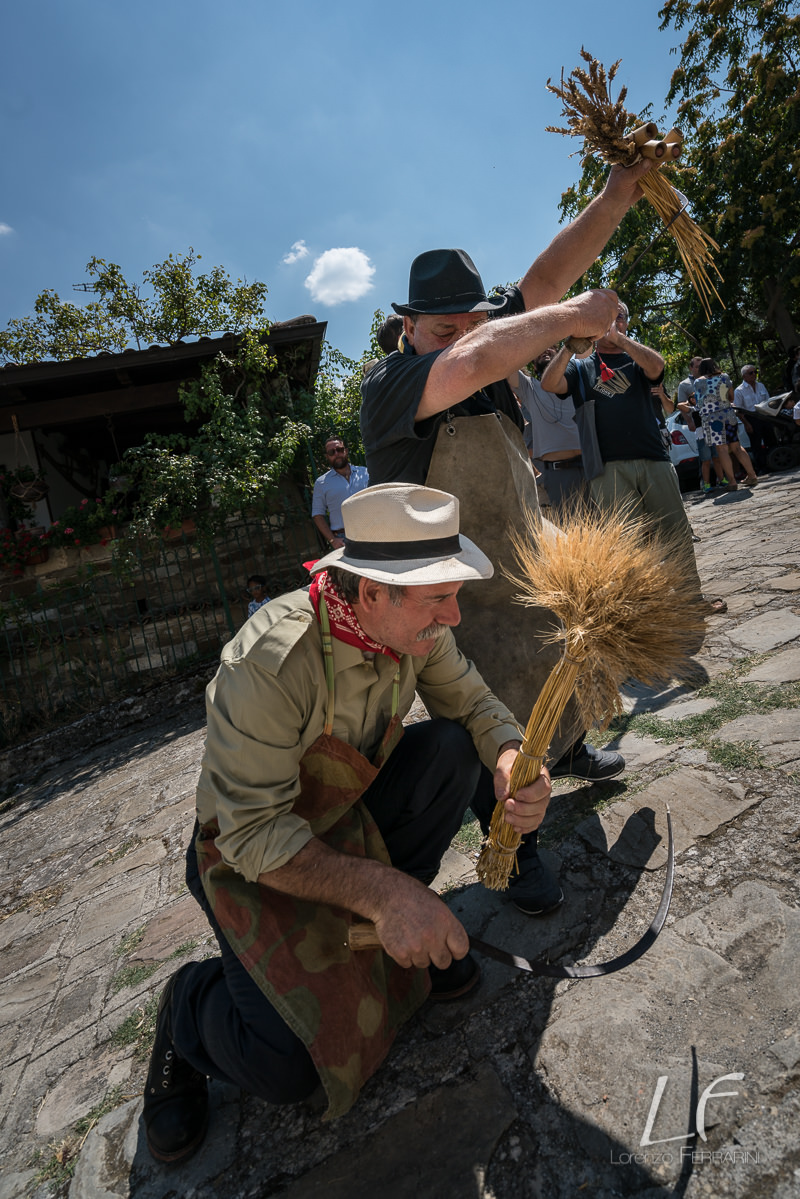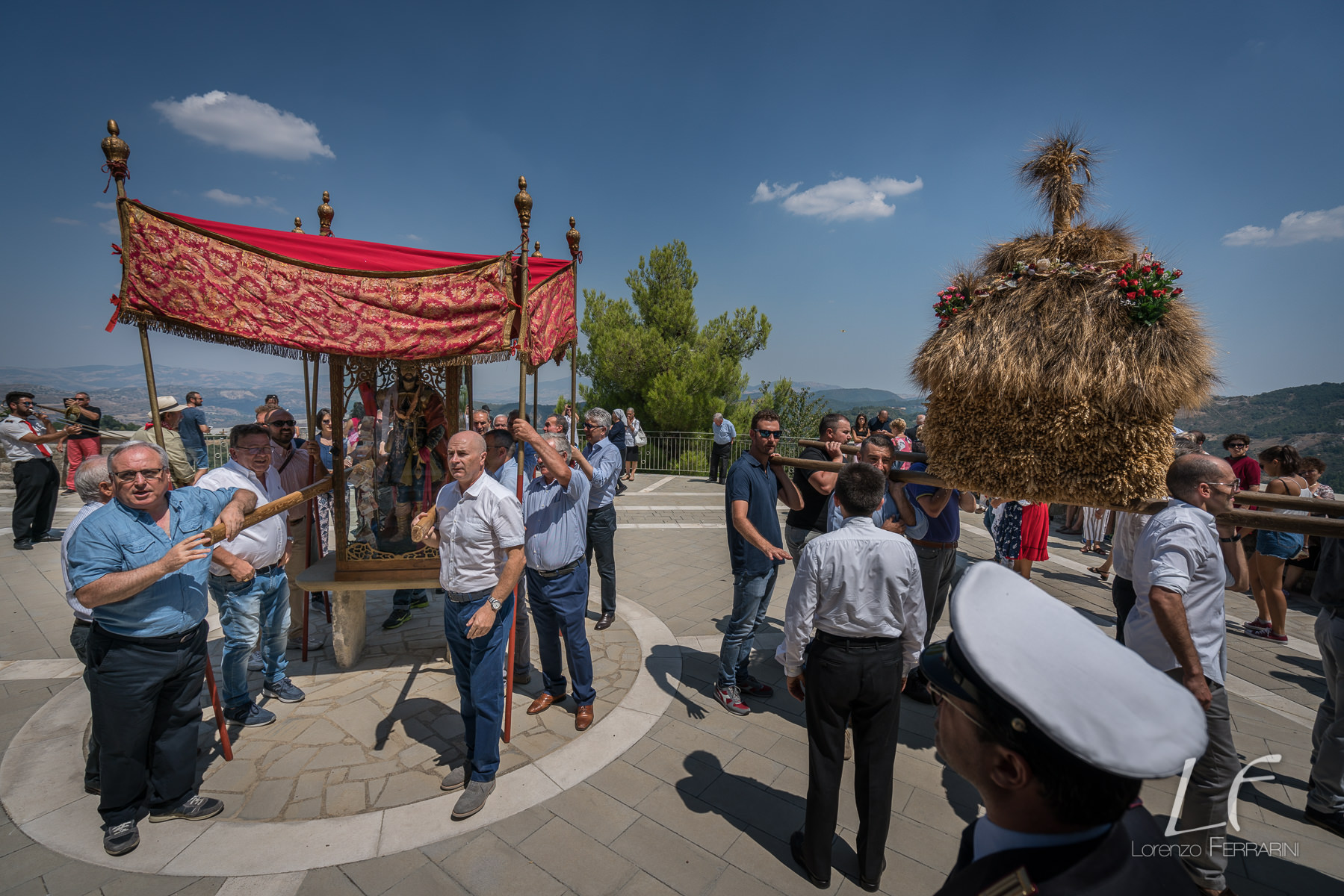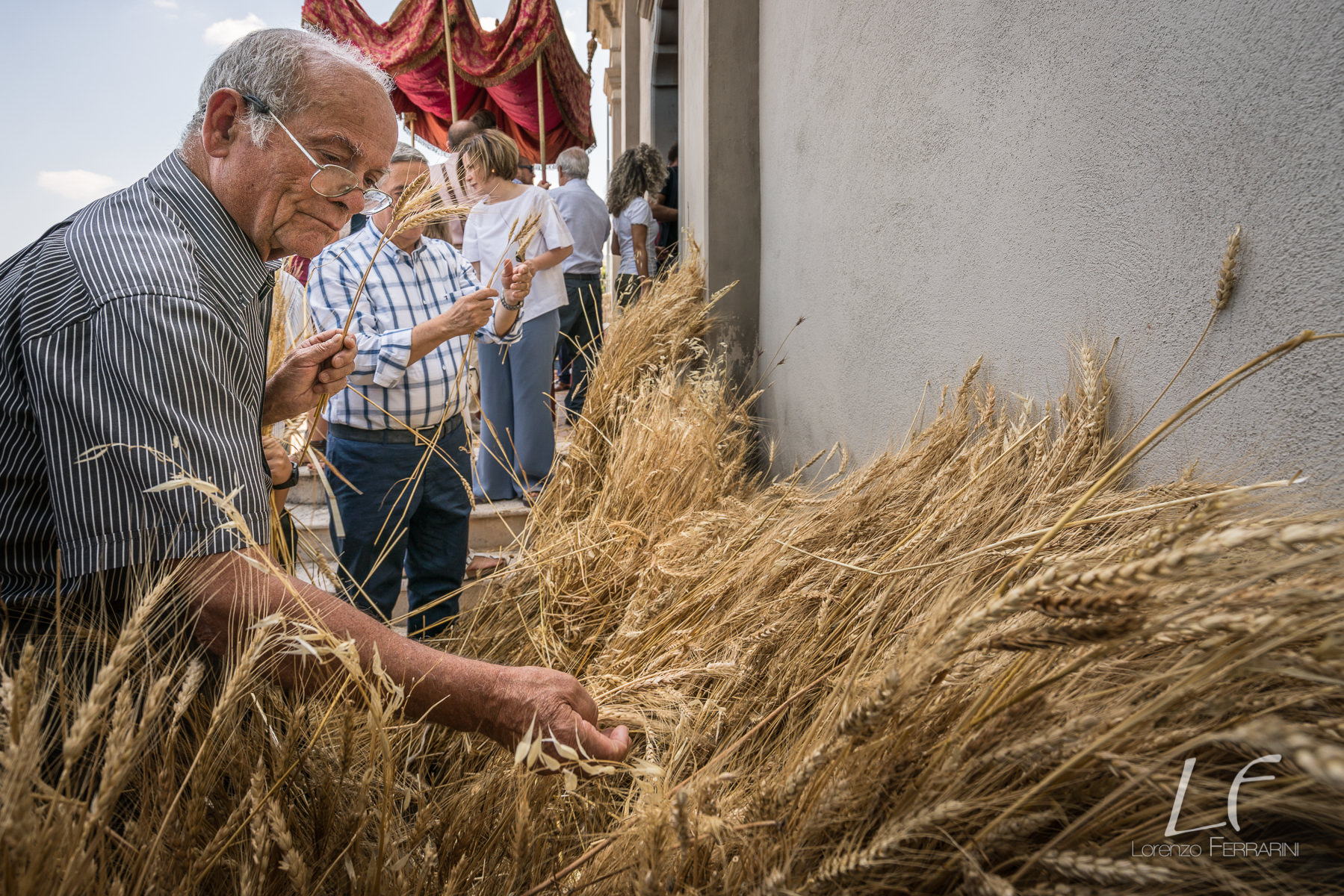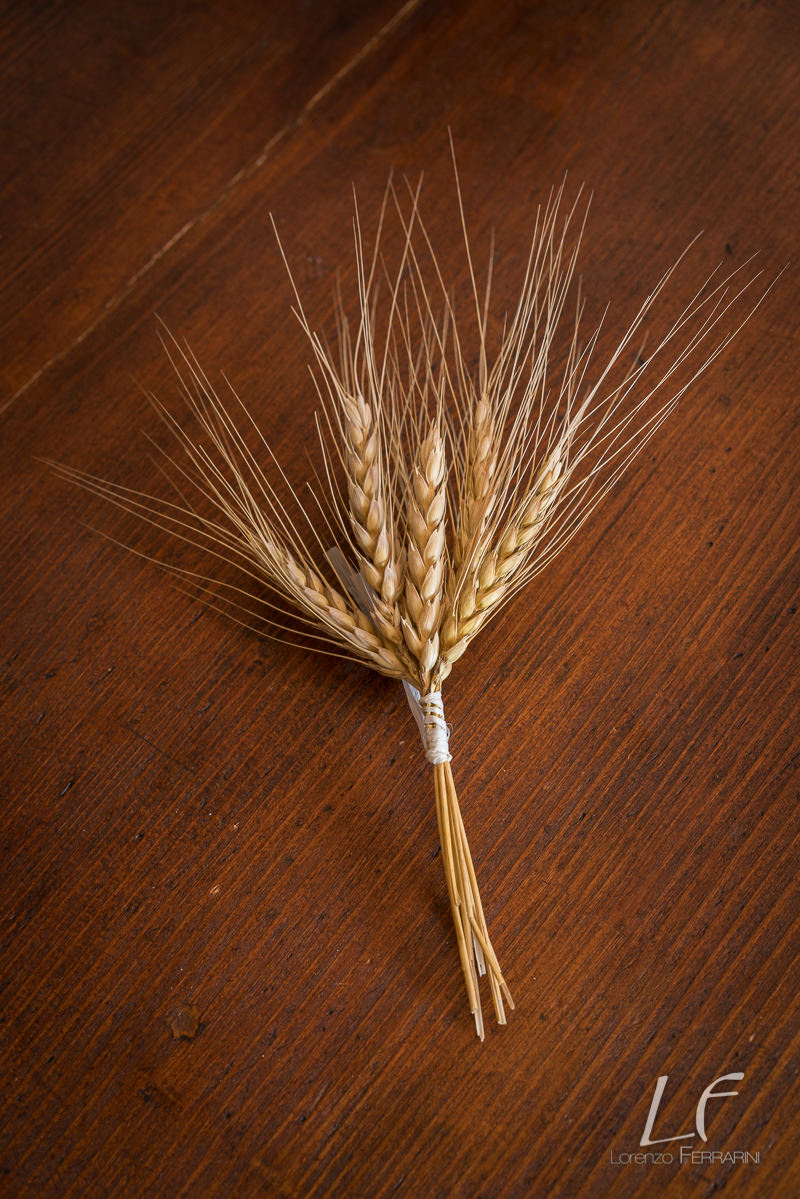San Rocco in San Paolo Albanese

I visited the festival for San Rocco in San Paolo Albanese (PZ) for the first time in 2004. I witnessed for the first time the dances with the wheat sheaves and sickles the following year, shooting with my first digital camera. I meet some of the protagonists of that day 12 years later, as one of the dancers has retired and is replaced by his son, another needs to draw from an oxygen bottle before and after the festival. A new dancer, for the rest of the year settled in northern Italy, has joined them.
San Paolo was missed by De Martino when he studied the harvest pantomime in neighbouring San Giorgio in 1959. Yet in this tiny village, facing an increasing ageing and gradual reduction of its population, this festival involving ritualised dancing with sickles and a sheaf of wheat has been taking place almost every year as far back as we have records. A large offering of wheat (himunea) is carried on shoulder in the procession that accompanies Saint Rocco between two churches. Two dancers run ahed of it, dressed as reapers and swinging their sickles with aggressive attitude (which, I have to say, got a bit diluted with the years). A third man dances with them, to suddenly steal the wheatsheaf they carry (dhumati) and run away. This formulaic pantomime is repeated at the sound of the double reed instruments coming from San Costantino Albanese, another village hosting a population of Albanian origin on the other side of river Sarmento. At the end of the procession the wheat is taken home by those present, in small bundles composed of an odd numbers of spikes.
It is hard to trace the connection between this festival and that in San Giorgio Lucano, but it is known that the village was initially founded by Albanian refugees around 1534, until the local prince chased them away at the beginning of the following century and encouraged local peasants to take their place. The refugees from San Giorgio went further up the Sarmento valley to found San Costantino and San Paolo, or more likely to join other settlers who lived near pre-existing Basilian monasteries.
These photographs are part of a series on wheat festivals in Basilicata, in this case made with a Sony A7RII and three lenses: Sony 16-35/4 FE, Sony 55/1.8 FE and Zeiss 85/1.8 Batis.

